Cosmetic Tube
Cosmetic Tube
Tubes are widely used in the cosmetic packaging industry due to their versatility and convenience.
Made from materials like PE plastic, aluminum foil, and plastic films, these tubes are formed through co-extrusion processes, resulting in lightweight, durable, and recyclable packaging solutions.
Tubes are easy to squeeze, portable, and offer excellent processing and printing adaptability, making them highly popular among skincare and beauty brands.
Their ability to protect product integrity while providing a sleek, customizable design enhances brand appeal and consumer experience.
VCPAK is a cosmetic tube supplier specializing in versatile packaging solutions for skincare and beauty products. We offer a range of cosmetic tubes made from PE plastic, aluminum foil, and plastic films, known for their lightweight, durability, and excellent barrier properties, ideal for products like creams, gels, and lotions.
Our tubes support various customization options, including silk-screen printing, hot stamping, and labeling.
VCPAK’s expertise lies in providing eco-friendly, cost-effective packaging that ensures both functionality and visual appeal for your brand’s needs, enhancing consumer engagement and product protection.
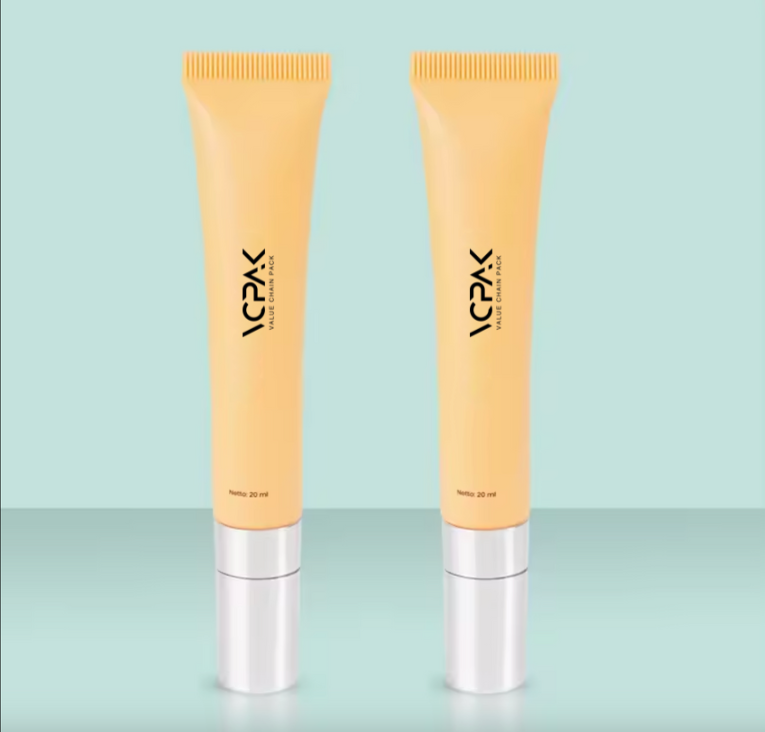
AllureEye Zinc Alloy Cream Tube
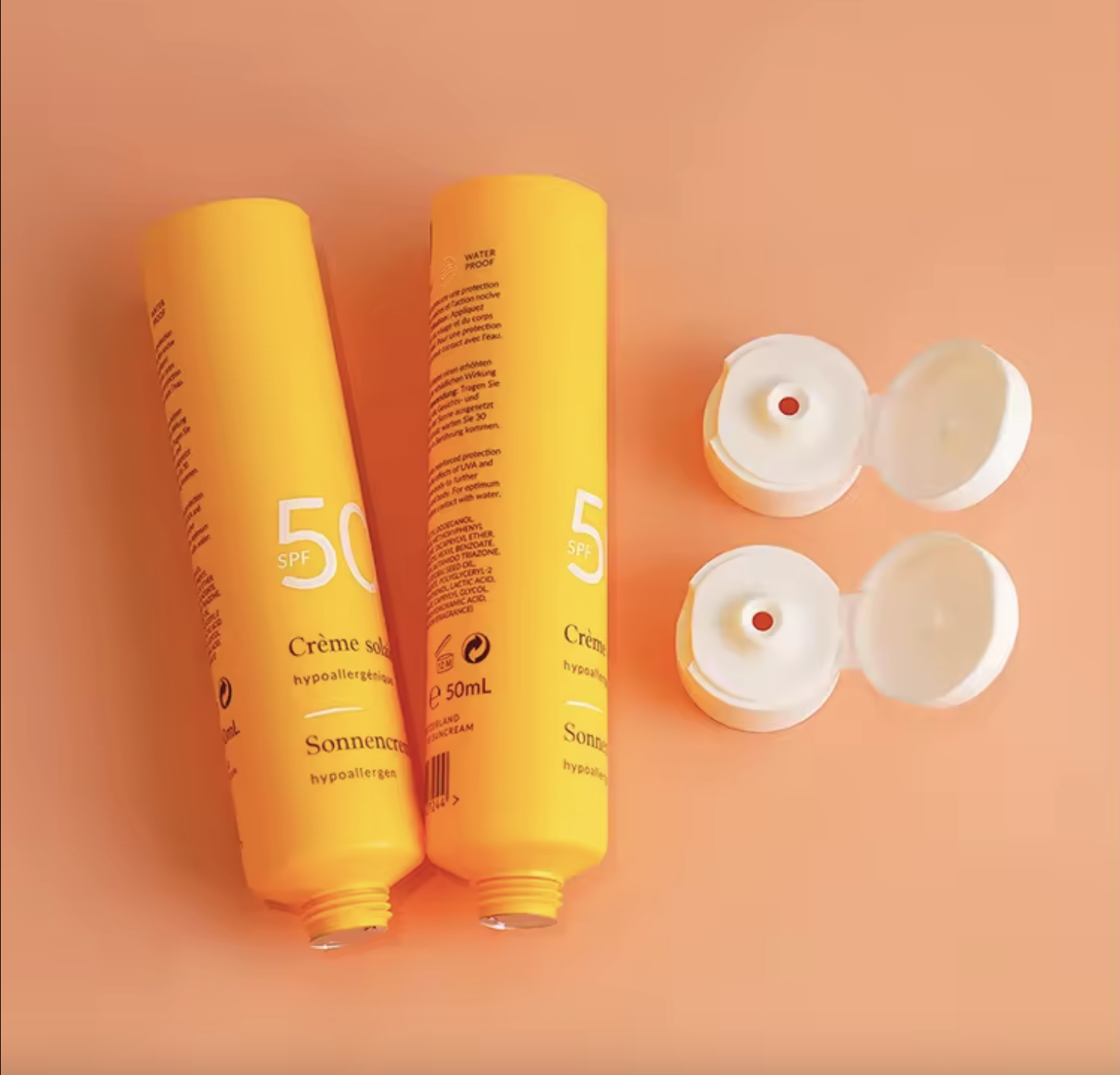
SunGuard PE Squeeze Tube Series
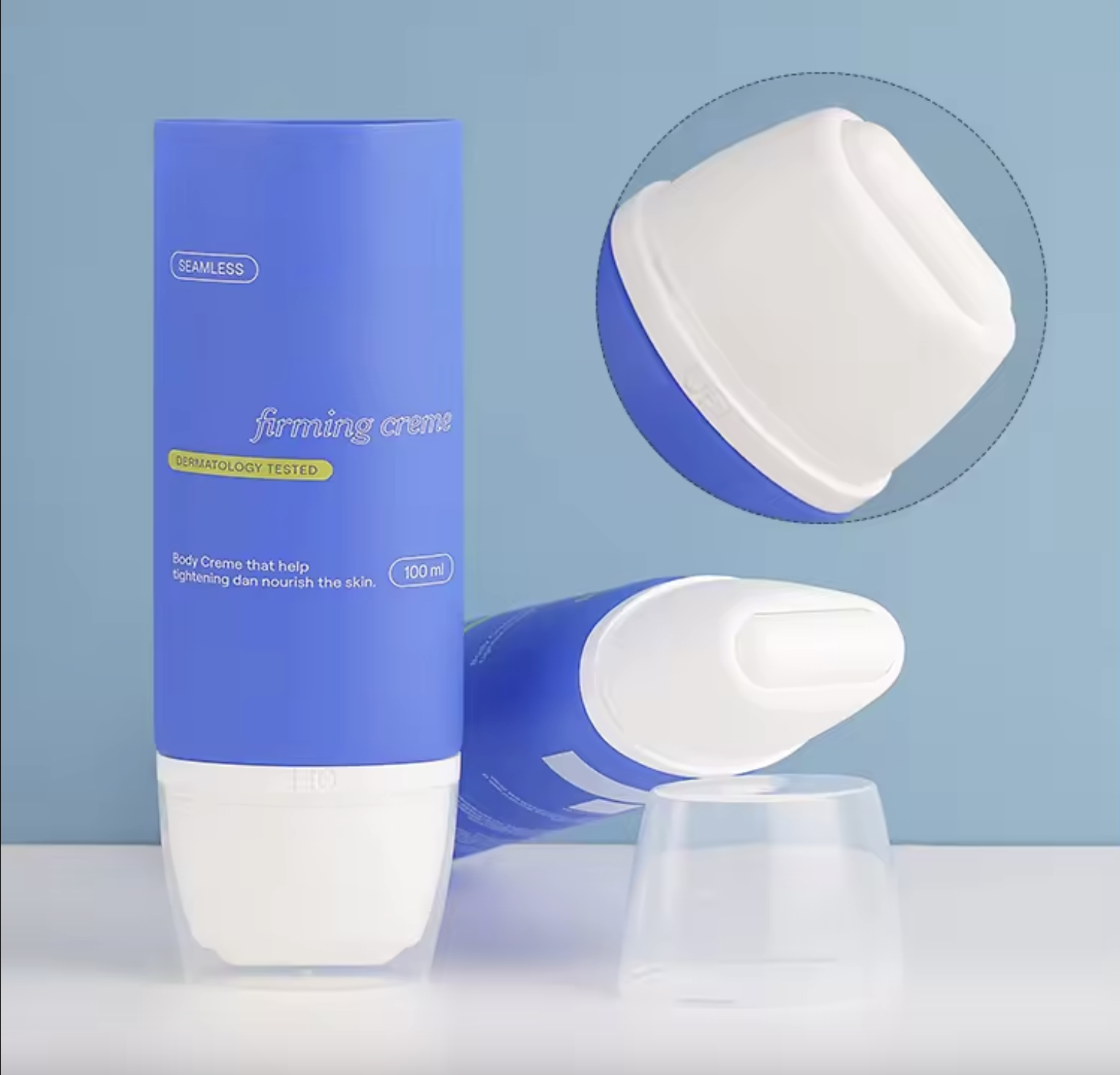
RevitalizeRoll Massage Cream Tube
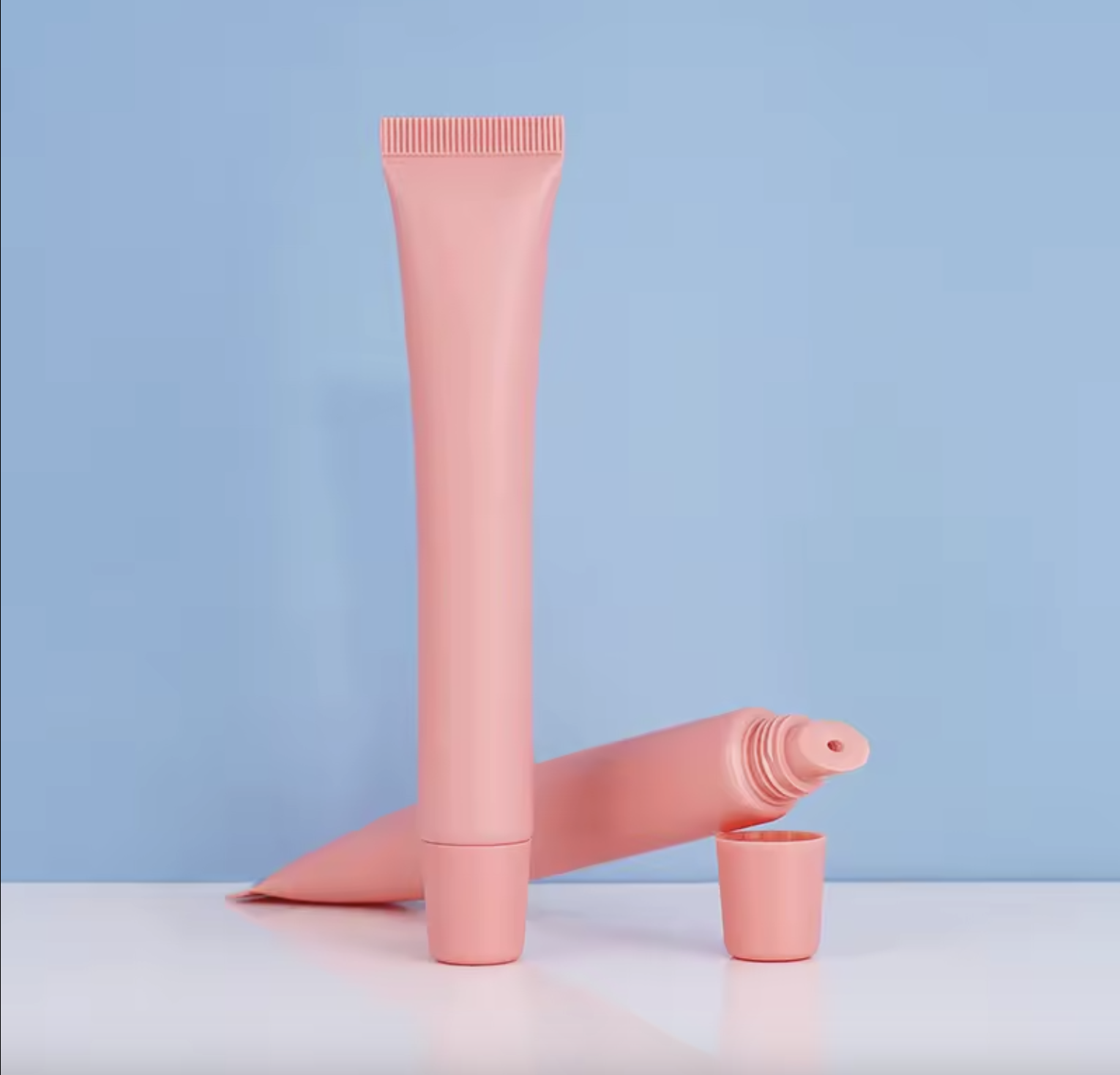
SoftSqueeze Lip & Eye Care Tube
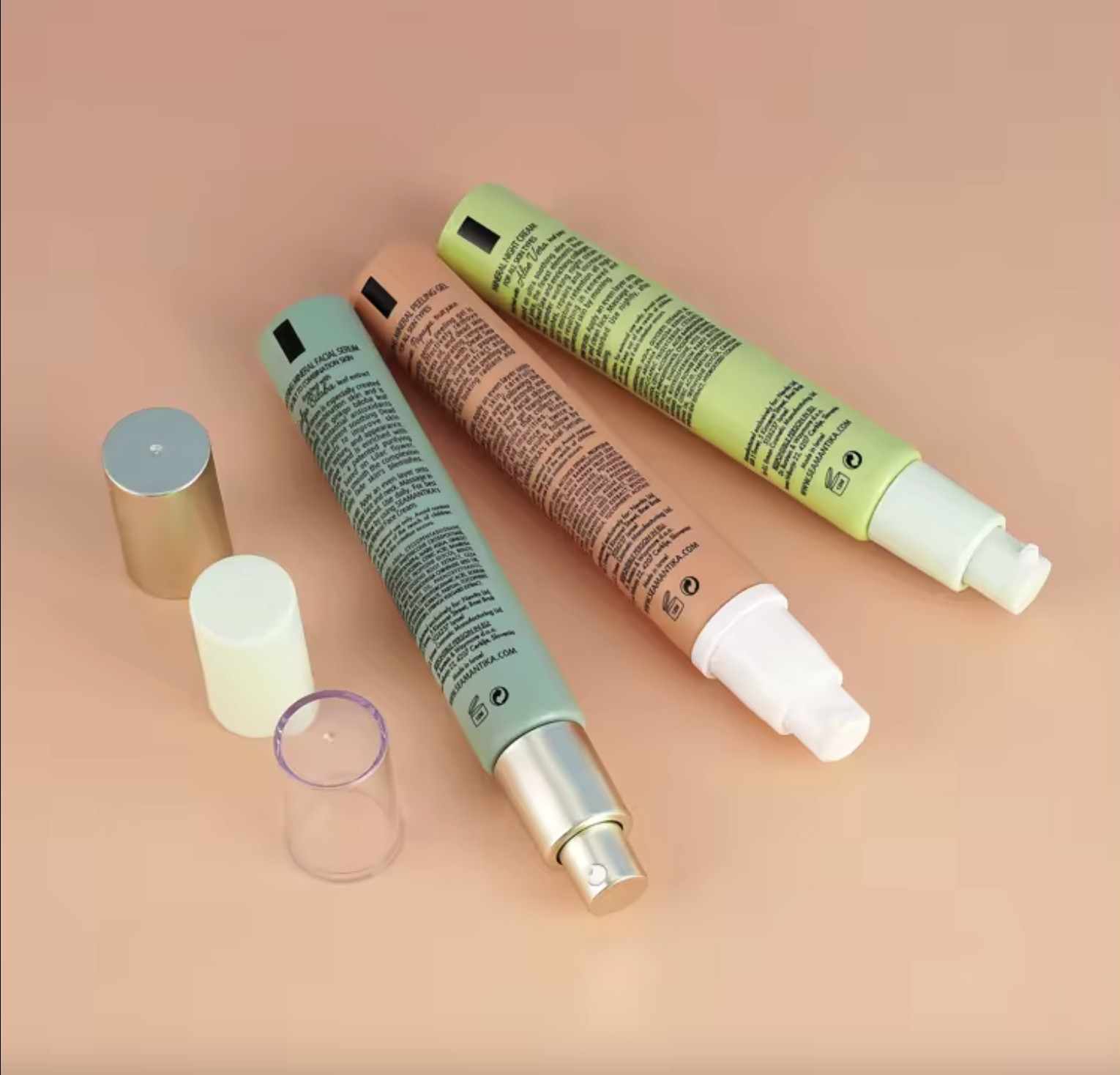
AirShield Cosmetic Pump Tube Series
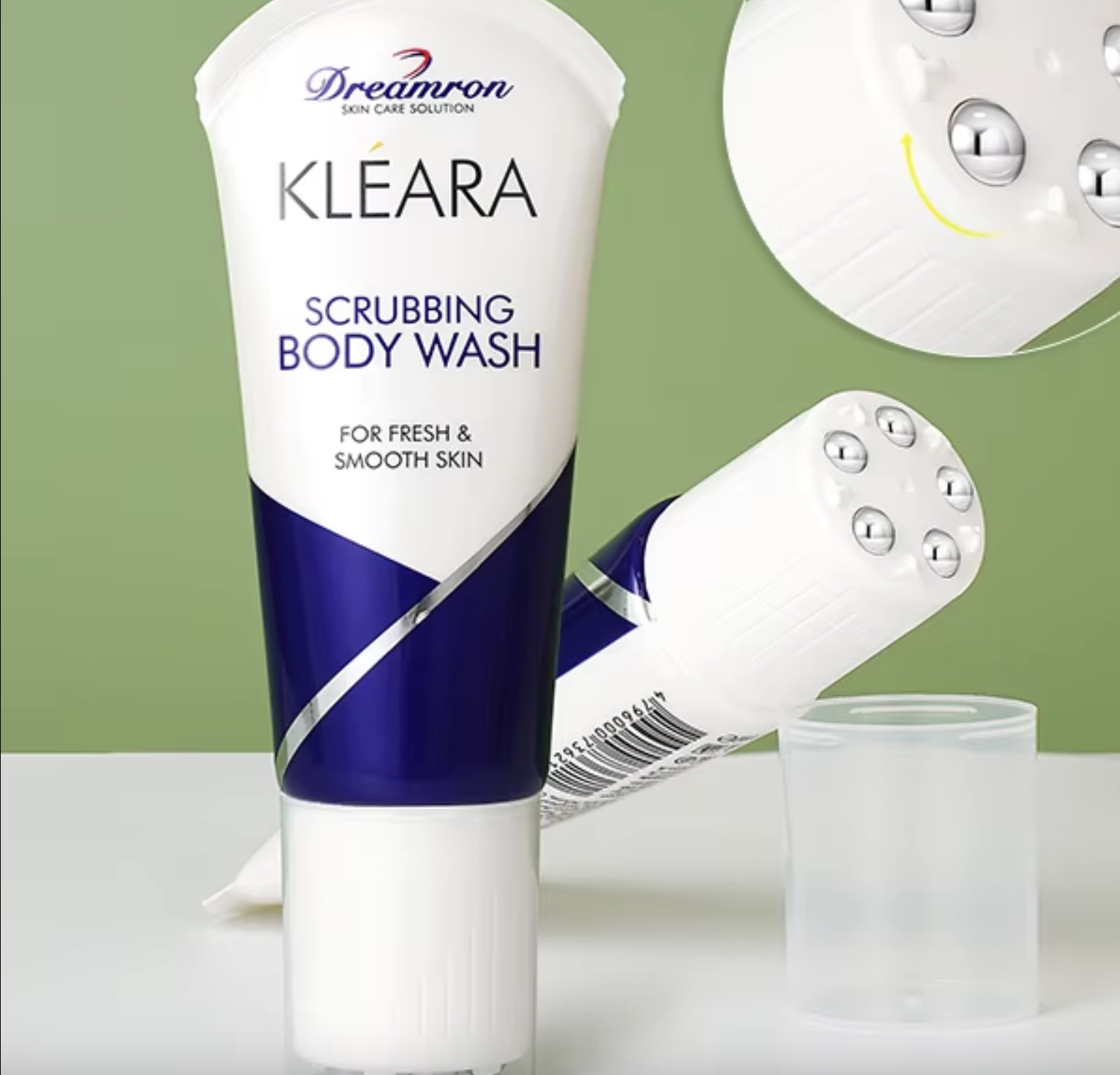
SmoothGlide 5-Roller Massage Tube
Discover More Cosmetic Tube Styles?
Cosmetic Tube Types and Manufacturing Processes
Cosmetic tubes are typically categorized into three main types based on their material composition and manufacturing processes: Aluminum-Plastic Composite Tubes, All-Plastic Composite Tubes, and Plastic Co-Extruded Tubes.
Each type has distinct characteristics and applications in the cosmetic packaging industry, catering to different product needs and consumer preferences.
1. Aluminum-Plastic Composite Tubes
These tubes combine aluminum foil and plastic films through a co-extrusion process, forming sheets that are then shaped into tubes.
Their typical structure is PE/PE+EAA/AL/PE+EAA/PE, offering excellent barrier properties ideal for high-hygiene cosmetic packaging.
With advances in technology, the thickness of the aluminum foil barrier has been reduced from 40um to as little as 9um, enhancing resource efficiency.
2. All-Plastic Composite Tubes
Made entirely from plastic, all-plastic composite tubes come in two varieties: non-barrier and barrier types.
Non-barrier tubes are used for low-cost, fast-moving cosmetic products, while barrier tubes, which include layers like EVOH, PVDC, or oxide-coated PET, are used for mid-range products.
Their typical structure is PE/PE/EVOH/PE/PE, providing adequate protection for the contents.
3. Plastic Co-Extruded Tubes
This type of tube uses co-extrusion technology to combine different materials in a single step, forming either single-layer or multi-layer tubes.
Single-layer tubes are best for products requiring high visual appeal but lower functional performance, such as hand creams.
In contrast, multi-layer co-extruded tubes are designed for premium cosmetics, offering superior barrier and structural qualities.
Surface Treatment of Cosmetic Tubes
Cosmetic tubes can undergo various surface treatments to enhance their visual appeal and functionality.
Options include colored tubes, transparent tubes, frosted finishes (both colored and clear), and pearlescent tubes in shades like silver or gold.
Finishes range from UV coatings to matte or glossy looks. Matte finishes offer an elegant appearance but can easily show dirt.
A key distinction between colored tubes and those with extensive printing is visible at the tail cut—white cuts indicate extensive printing, requiring high-quality inks to prevent peeling, cracking, or exposing white marks when bent.
Graphic and Text Printing on Cosmetic Tubes
The surface of cosmetic tubes can feature various printing methods, including silk screen printing, offset printing, and hot stamping in gold or silver.
- Silk Screen Printing: Ideal for small, solid color blocks, commonly used for professional line products.
- Offset Printing: Similar to paper printing, suitable for larger, multicolored designs, often used for mass-market products. Most offset printing uses UV-dried inks that require strong adhesion and color stability.
- Hot Stamping: Adds a premium look with metallic finishes.
Printing quality is crucial, with specifications requiring precise color ranges, alignment accuracy within 0.2mm, and clear, complete text. These printing processes ensure high-quality presentation, enhancing the visual appeal and branding of cosmetic tubes.
Tube Printing Area Dimension Diagram
| Φ Tube Diameter (mm) | Front Center Distance (mm) | Unfolded Center Distance (mm) | Back Center Distance (mm) | Tube Unfolded Circumference (mm) |
|---|---|---|---|---|
| 13 | 10.00 | 20.00 | 30.00 | 40.00 |
| 16 | 12.40 | 24.80 | 37.20 | 49.60 |
| 19 | 14.65 | 29.30 | 43.95 | 58.50 |
| 22 | 17.00 | 34.00 | 51.00 | 69.00 |
| 25 | 19.40 | 38.80 | 58.20 | 77.60 |
| 30 | 23.25 | 46.50 | 69.75 | 93.00 |
| 35 | 27.25 | 54.50 | 81.75 | 109.00 |
| 38 | 29.50 | 59.00 | 88.50 | 118.00 |
| 40 | 31.00 | 62.00 | 93.00 | 124.00 |
| 45 | 34.90 | 69.80 | 104.70 | 139.60 |
| 50 | 38.90 | 77.80 | 116.70 | 155.60 |
| 55 | 42.75 | 85.50 | 128.25 | 171.00 |
| 60 | 46.50 | 93.00 | 139.60 | 186.00 |
Cosmetic Tube Printing Area Layout
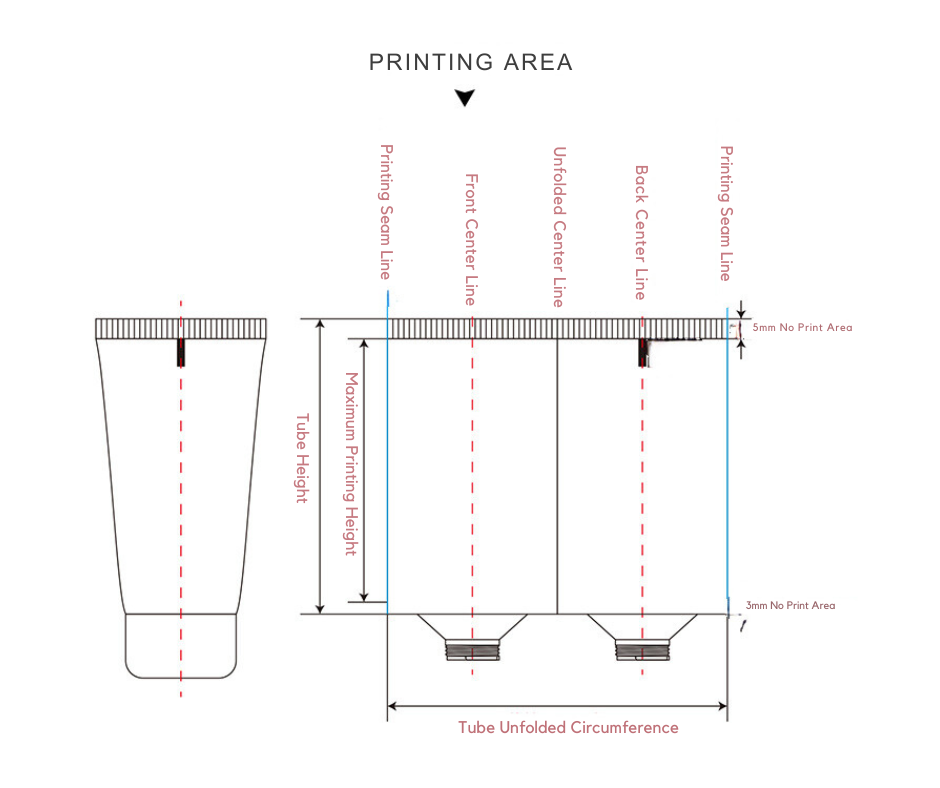
Structure of Cosmetic Tubes
Plastic tubes are primarily composed of three parts: the tube shoulder, tube body, and tube tail.
The tube body often serves as the primary area for decoration, achieved through direct printing or adhesive labels to display text and graphics, enhancing the packaging’s value.
Direct printing includes methods like silk screen printing and offset printing. Adhesive labels offer advantages over direct printing, such as greater printing versatility and stability, supporting techniques like flexography, letterpress, and hot stamping, which allow for complex and vibrant color displays.
1. Tube Body
A. Detailed Classification
The tube body of cosmetic tubes can be classified based on material, thickness, shape, and application:
•By Material: Includes Aluminum-Plastic Composite Tubes, All-Plastic Tubes, Paper-Plastic Tubes, and High-Gloss Aluminum Tubes.
•By Thickness: Available as single-layer, double-layer, and five-layer composite tubes.
•By Shape: Includes round, oval, and flat tubes.
•By Application: Suitable for products like facial cleansers, BB creams, hand creams, sunscreens, toothpaste, conditioners, hair dyes, and facial masks.
Common Diameters: Φ13mm, Φ16mm, Φ19mm, Φ22mm, Φ25mm, Φ28mm, Φ30mm, Φ33mm, Φ35mm, Φ38mm, Φ40mm, Φ45mm, Φ50mm, Φ55mm, Φ60mm.
Common Capacities: 3G, 5G, 8G, 10G, 15G, 20G, 25G, 30G, 35G, 40G, 45G, 50G, 60G, 80G, 100G, 110G, 120G, 130G, 150G, 180G, 200G, 250G.
B. Tube Size and Volume Considerations in Production
During the production of cosmetic tubes, they undergo multiple “heating” processes such as drawing, sealing, polishing, offset printing, and UV curing during silk screen printing.
These steps cause the tubes to experience varying degrees of shrinkage, known as the “shrinkage rate.” As a result, tube diameter and length may vary within a specific range, which is considered normal.
Understanding these variations is essential for buyers in the cosmetic packaging industry to set accurate expectations for tube dimensions and volume.
C. Case: Five-Layer Barrier Tube Structure Diagram
This diagram illustrates the five-layer structure of a composite tube, featuring an outer PE layer, adhesive layers, a central EVOH barrier layer, and an inner PE layer. This construction provides excellent protection against external contaminants, making it ideal for high-performance cosmetic packaging.
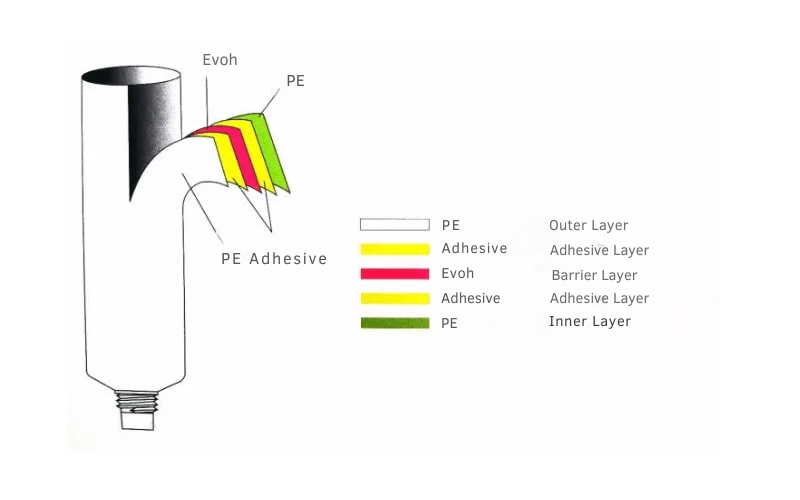
2. Tube Tails
After the product is filled, the tube tail is sealed using various techniques that enhance both the functionality and aesthetics of cosmetic packaging:
- Straight Line Seal: A clean and classic seal, providing a neat and professional look.
- Diagonal Line Seal: Adds a unique slant to the seal, offering a distinctive visual touch.
- Umbrella Seal: Features a decorative, fan-like finish that adds elegance and visual interest.
- Custom Shaped Seal: Allows for tailored designs that match brand aesthetics, offering a unique packaging style.
Sealing can also include date codes printed directly on the tail, offering an easy way to communicate product information such as production dates, expiry dates, or batch numbers. These sealing options provide brands in the cosmetic and skincare industries with the flexibility to enhance both product presentation and consumer trust through practical and visually appealing packaging solutions.
3. Tube Cap Options and Multi-Functional Accessories for Cosmetic Tubes
A. Standard Cap Options
Cosmetic tube caps come in various shapes and styles, such as screw caps (available in single and double layers, with double layers often featuring electroplated outer caps for a premium look), flat caps, round caps, flip-top caps, ultra-flat caps, dual-layer caps, ball caps, and lipstick caps.
These caps can undergo various treatments, including hot stamping, color coating, transparent finishes, spray painting, and electroplating.
Pointed caps and lipstick caps typically include inner plugs for added security. While tube bodies are extruded, most caps are injection-molded, and many tube manufacturers do not produce their own caps.
B. Multi-Functional Accessories
With evolving consumer demands, integrating functional elements like massage heads, rollers, and applicators into the tube design has become increasingly popular.
These additions enhance the user experience and add value by combining content delivery with functional benefits, aligning with market trends in the cosmetic and skincare packaging sectors.
What Are the Key Considerations When Purchasing Cosmetic Tubes?
Designing tube artwork can be challenging, especially for those unfamiliar with it. A quality supplier will simplify the process by providing a design area guide based on the tube’s diameter and length. They will review your design for alignment and production compatibility, offering feedback on placement, colors, and specs. They also check details like barcode direction, separations, and any artwork errors such as missing outlines.
Ensure that the materials used meet relevant health standards. Control harmful substances like heavy metals and fluorescent agents within the prescribed limits. For instance, tubes exported to the U.S. must comply with FDA standards (21CFR117.1520) for polyethylene (PE) and polypropylene (PP).
Tubes can be filled through the tail or the opening. If using the tube opening, ensure that the nozzle matches the tube’s opening size to facilitate easy filling. For tail filling, consider tube orientation for efficient filling. It’s also essential to understand whether the product requires hot filling or ambient filling to prevent processing issues and ensure high efficiency.
For products sensitive to oxygen or prone to fragrance loss, such as whitening cosmetics or essential oils, opt for five-layer co-extruded tubes with structures like PE/Adhesive Resin/EVOH/Adhesive Resin/PE. These tubes have significantly lower oxygen transmission rates (0.2–1.2 units) compared to single-layer PE tubes (150–300 units), effectively protecting the product’s quality and integrity.
Pricing varies by tube quality and manufacturer. Plate fees typically range from $60 to $80 per color. Tubes can accommodate multi-color printing and silk-screen printing, with the cost determined by the printing method and decoration such as hot stamping, which is priced per area. High-quality printing options like silk screen printing may have higher costs but offer superior results.
The standard production lead time is 15 to 20 days from sample confirmation. Minimum order quantities usually start from 5,000 to 10,000 units, with large manufacturers setting a 10,000-unit minimum. Smaller suppliers may accept orders starting at 3,000 units, especially for a variety of products. Most orders utilize common molds, but specialty caps may use custom molds.

